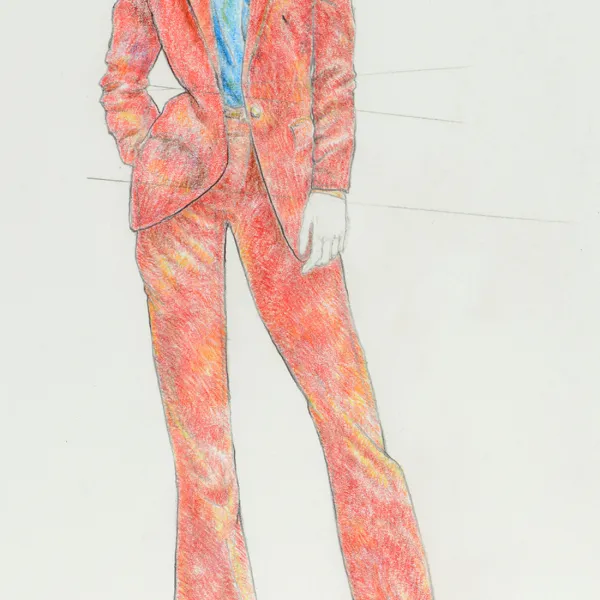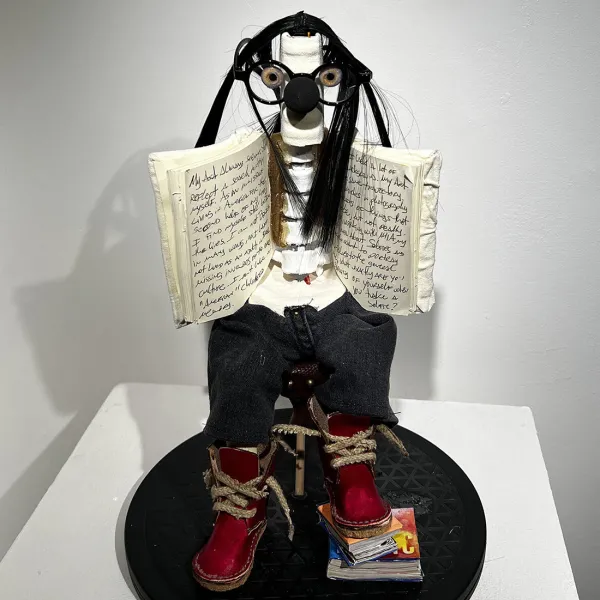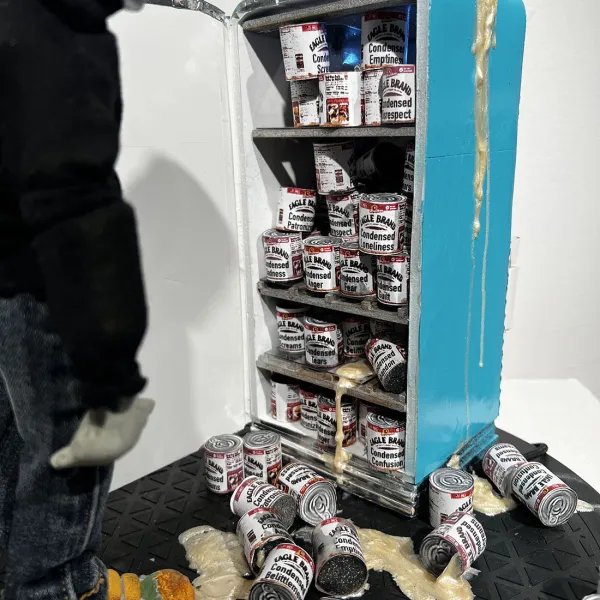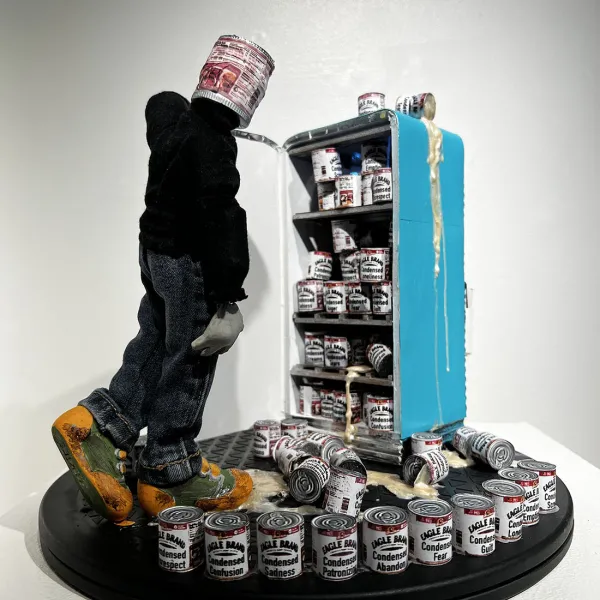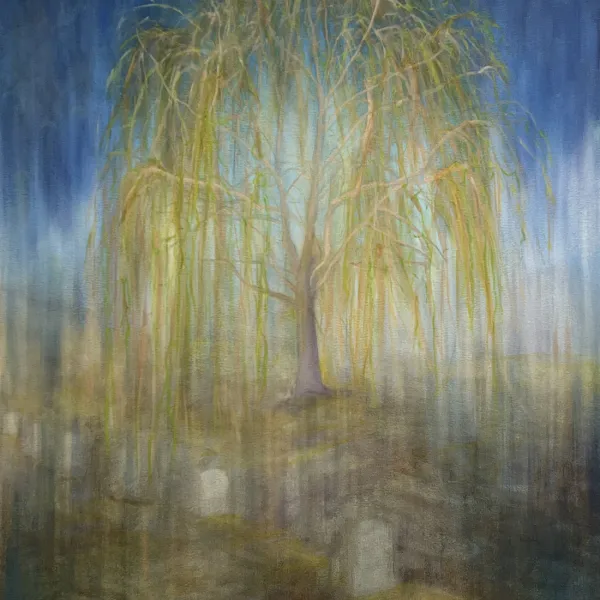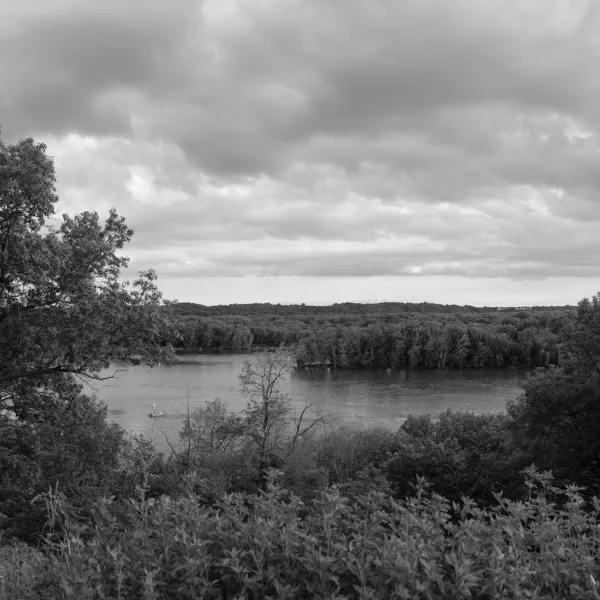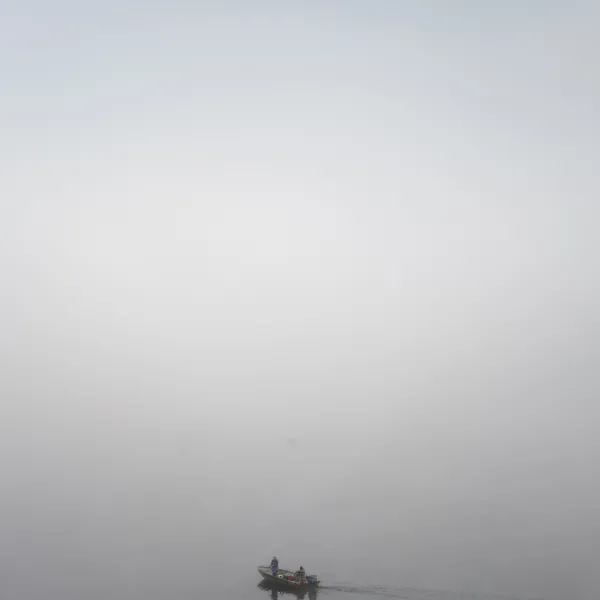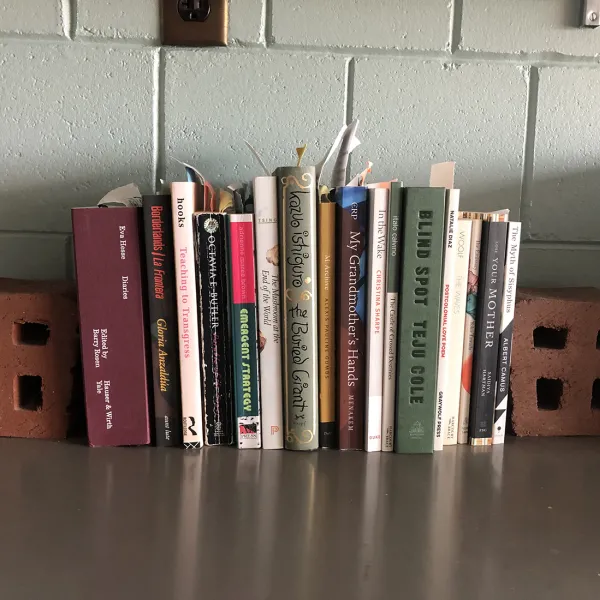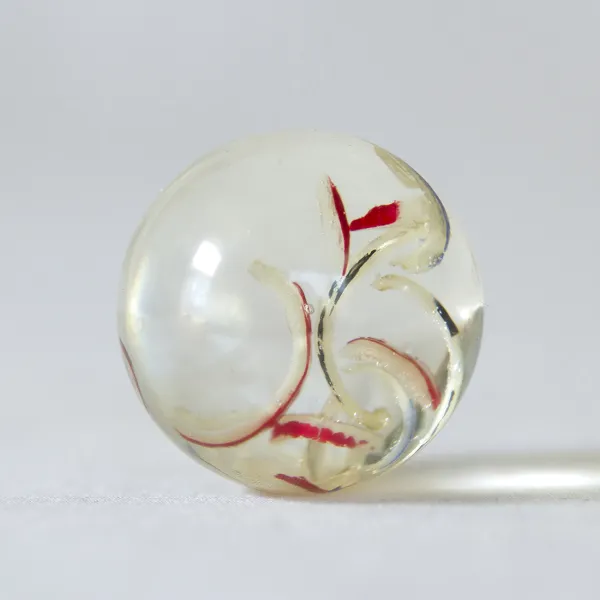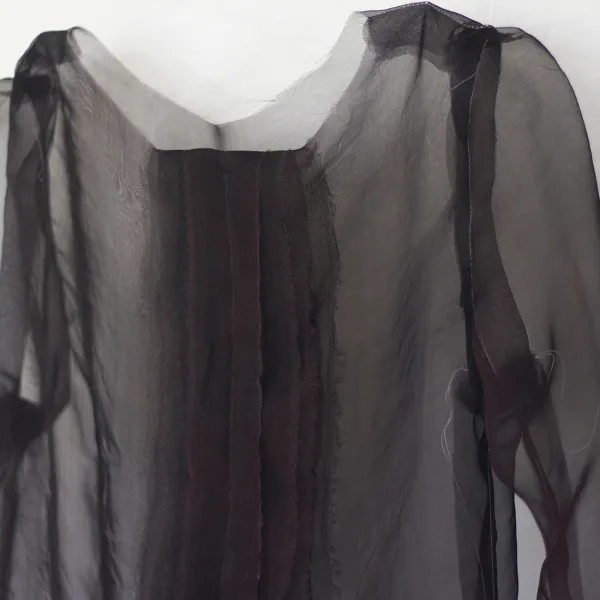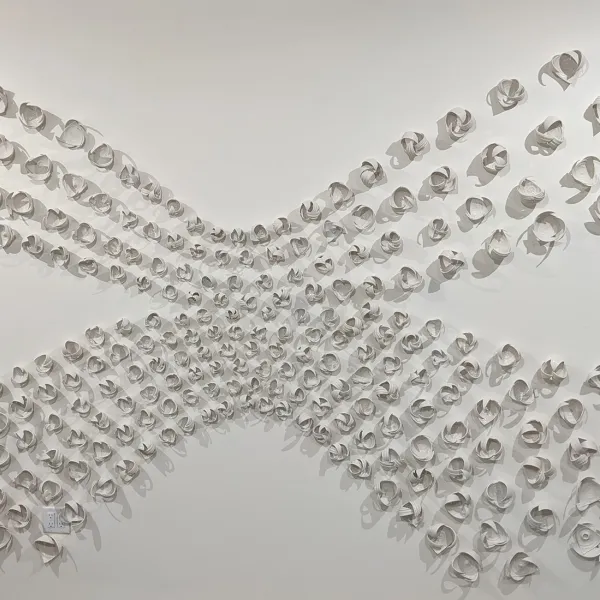Opening Reception: September 10, 5–7pm
Inspired by a new series of courses offered in the Department of Art and Art History that invite students to build their creative lives through inquiry, imagination and action, Shaping a Creative Life asks faculty and staff to share the ongoing content, questions, themes and methods of their creative practices. Featuring a variety of art forms that range from photography, painting, and printmaking to drawing, textiles, sculpture and installation, these artist-scholars reflect on identity, loss and resilience, and the concurrence of hope and despair. They explore memory, intimacy, mortality and in-betweenness. They situate their work within their experiences as artists and educators, seeking to understand themselves, their communities and the world through their art.
TWIN CITIES ART WEEK | October 12–16, 2022
This exhibition is part of Twin Cities Art Week! Twin Cities Art Week is a celebration of the vibrant local contemporary art scene in 23 venues across Minneapolis and St. Paul. From October 12–16, the Twin Cities Art Week will offer a full calendar of events including a gallery crawl, live performances, exhibition walkthroughs, film screenings, artist talks, parties and more. Spearheaded by Dreamsong Gallery, the participants of Twin Cities Art Week include major institutions, small non-profit spaces, commercial galleries, artist-run spaces and university galleries dedicated to the presentation of contemporary art. More information: tcartweek.org, @tcartweek
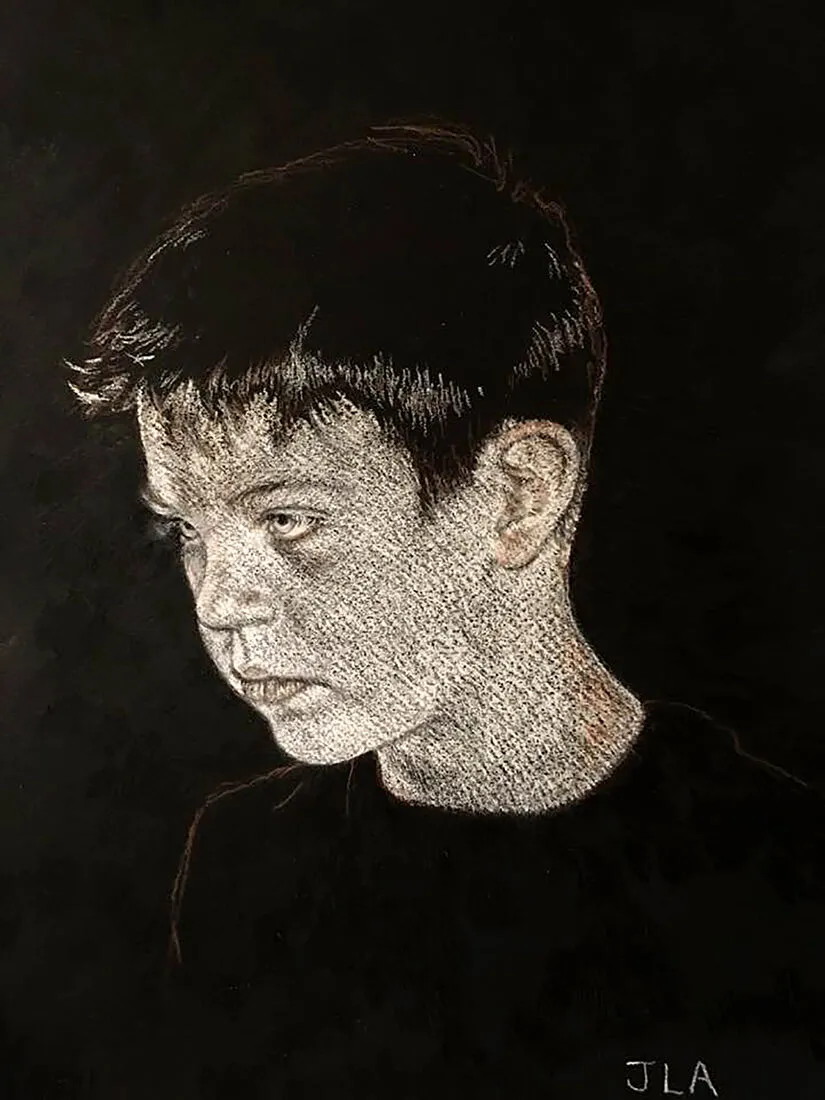

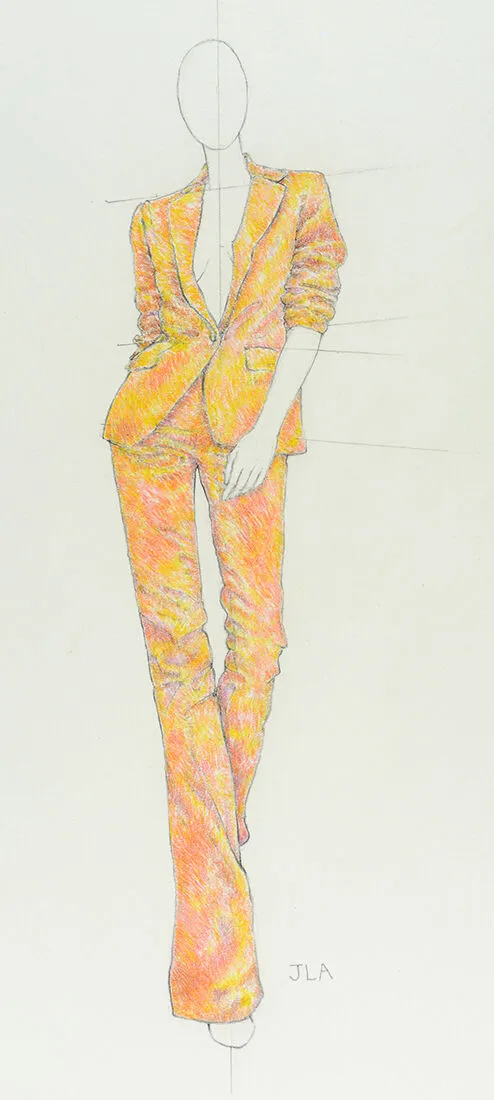
ARTIST STATEMENT
Attentive Distraction
I see life as an attentive distraction of endless moments. It is my life, I want to be attentive to it, and I want to be present for it. Sometimes, the present is complicated. So, I distract myself. I distract myself when I don’t have the tools to cope or the support to depend on.
I build scenarios in my subconscious mind to explain these series of feelings, moments, and situations. I distract myself from the hurt, from the ugly in people. When we have no control over what is happening around us, we can only control the distractions, fantasies, and make beliefs. The four distractions I share with you today are the beginning of a series I am creating about my life.
I may as well have come from an egg
We all come from somewhere, and being adopted, I often wondered how much your origins affect your life. Your childhood can be an open window to a sunny day and a life full of paths to opportunities and accomplishments when you have a supportive and nurturing family. On the other hand, it can also be a prison of trauma and situations that keep us from reaching our full potential. This is my biological mother. She has no hands; once I was given away, I could no longer be cared for by her. As a mother, I cannot comprehend what it means to give up your child. Inside is just pain.
Condensed Milk
We all have coping strategies; some are healthier than others. Some are weird and painful. They carry us through difficult times, moments, and situations that seem unbearable any other way. Condensed milk was my distraction during my early teen years. I would drink condensed milk, looking for something sweet. Each "CAN" became a reason or an excuse to cover my condensed shame, condensed loneliness, condensed tears, condensed screams. Today the cans can't hold it anymore. They have all expired. They stayed in the '80s.
Wallpaper
Growing up, being invisible was my superpower. The more I blended in, the better off I was. I lost myself in the wallpaper a few times by standing still for really long periods of time. I made myself so invisible that I almost ceased to exist altogether in a few relationships. But even in my distraction, self-preservation kicked in once I realized I was queer and, I just ran. I had to run from a place where being me was not an option. In the pursuit of my true colors, I crossed an ocean in search of my Rainbow, and YES, I did find my pot of gold at the end of it.
Changing my narrative
I am an obnoxiously positive person. I got lucky, I suppose. Even during the most devastating moments of my life, I got up the following day and kept going. There is always the next morning. Problems are just like fears. They don't leave you until you solve them. You have to face them, so they don't control you. Then you can change the narrative. I have earned this thick spine and am allowing myself to write my story with a different intent: freer, more self-assured.
Creating these worlds has reminded me how much I have changed and grown since the beginning of my life. Facing these uncomfortable places within myself and changing the narrative of these moments made me realize they are not part of my story anymore. Now, they are stories to tell.
ARTIST BIO
Lys Akerman-Frank, a native Brazilian, has been living in the United States for the past 27 years and became a proud American citizen in 2015. She graduated from St. Catherine University in 2001 with a B.A. in Graphic Design. She also received a Certified Occupational Therapist Assistant degree from Mount Ida College in Boston, MA, and a degree in Industrial Design from Faculdade de Belas Artes in Sao Paulo, Brazil. For over ten years, Lys worked in the corporate world as a liaison between creative and marketing departments and managed the print production of large-scale advertising materials. To balance her work and family life and create more time for her art-making, she started Art & Frames in 2010, her custom frame shop and gallery in St. Paul, Minnesota. In addition to her framing business, she designs professional awards for companies and sells art made by local and international artists. Lys’s latest artistic endeavor includes designing, producing, and selling puppets. She has exhibited her work in various venues throughout the Twin Cities, including the Minneapolis Institute of Art (Mia). She currently works at The Catherine G. Murphy Gallery at St. Catherine University. Learn More: akerlys.com
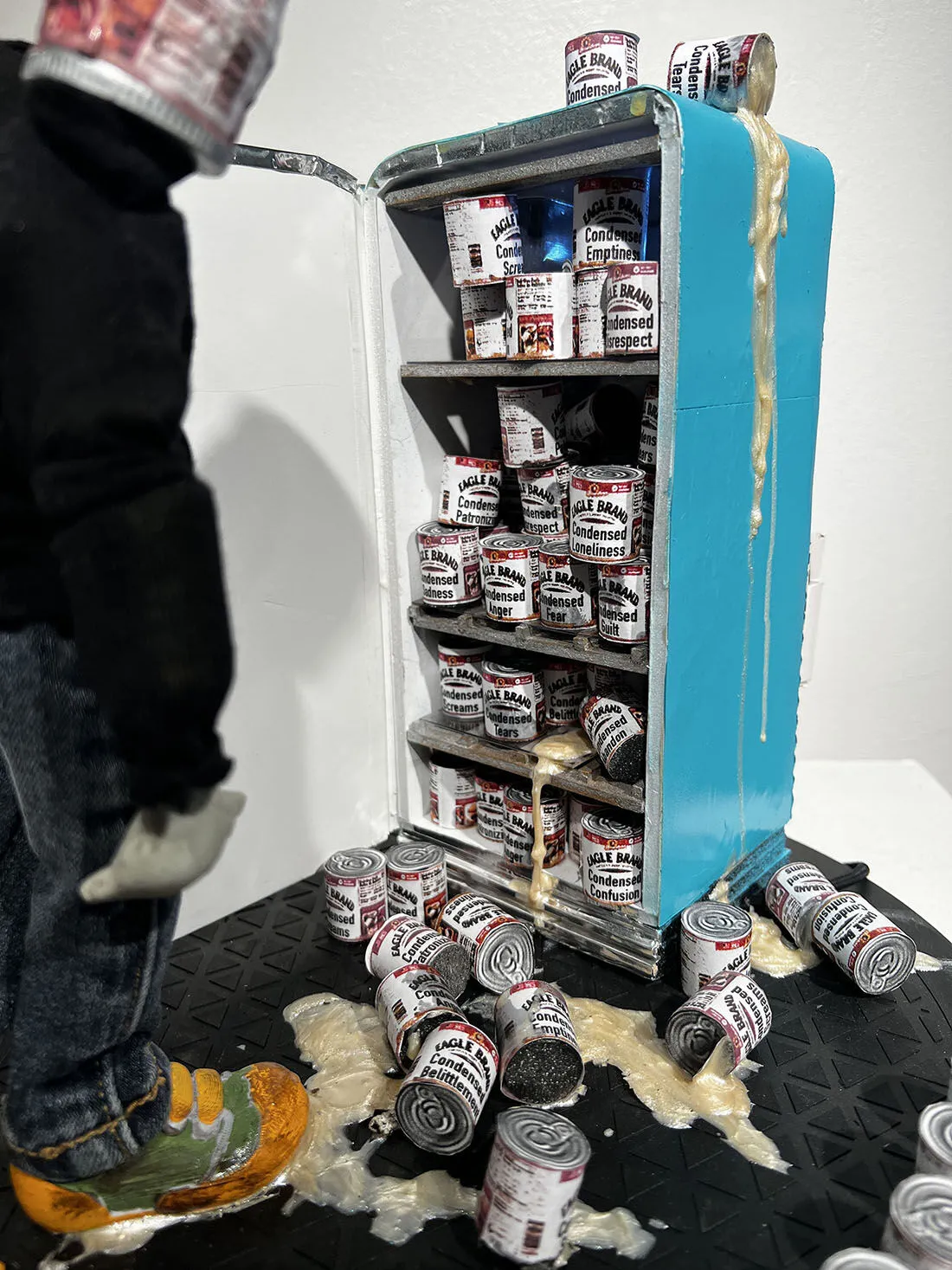
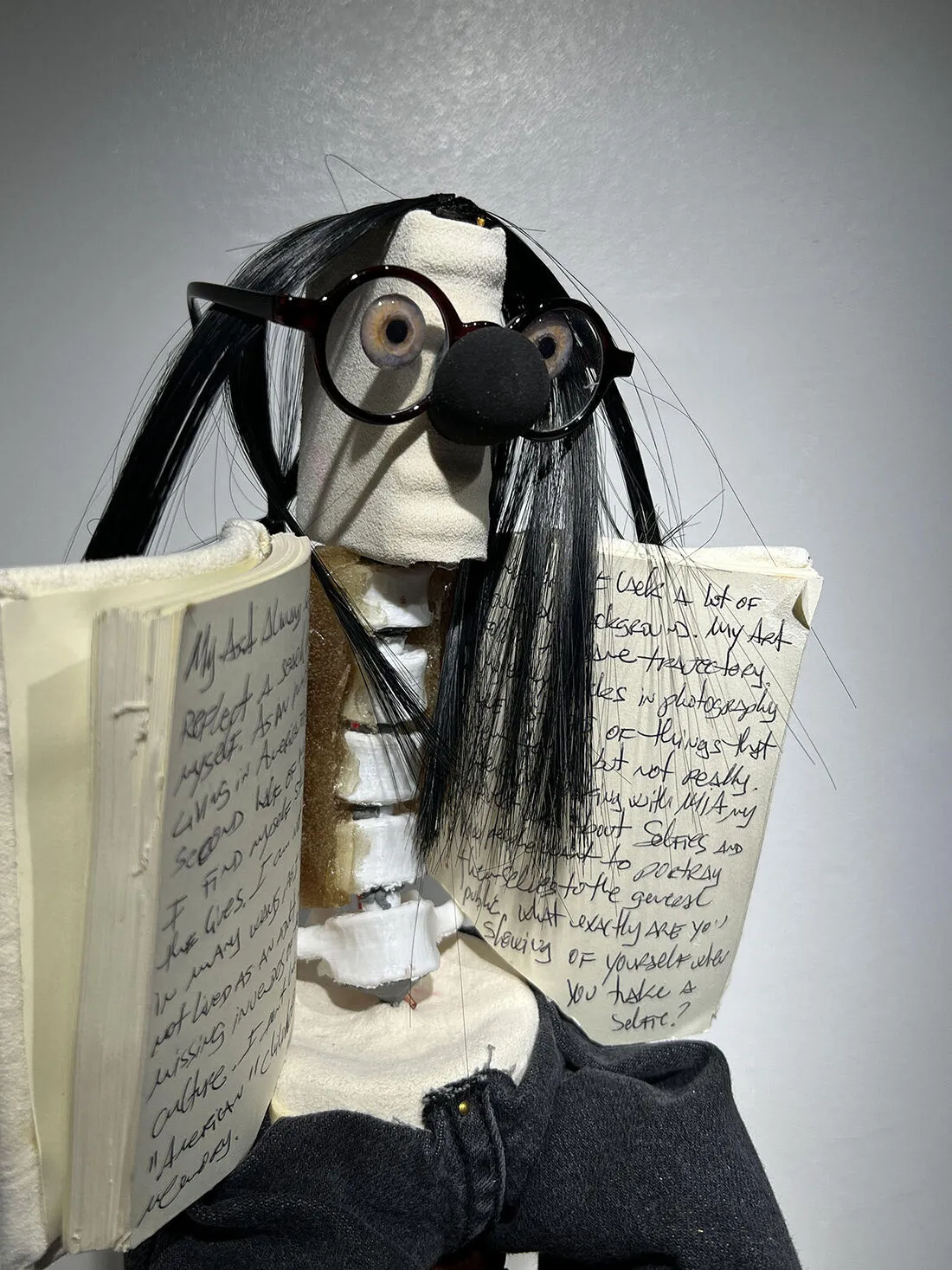
ARTIST STATEMENT
Attentive Distraction
I see life as an attentive distraction of endless moments. It is my life, I want to be attentive to it, and I want to be present for it. Sometimes, the present is complicated. So, I distract myself. I distract myself when I don’t have the tools to cope or the support to depend on.
I build scenarios in my subconscious mind to explain these series of feelings, moments, and situations. I distract myself from the hurt, from the ugly in people. When we have no control over what is happening around us, we can only control the distractions, fantasies, and make beliefs. The four distractions I share with you today are the beginning of a series I am creating about my life.
I may as well have come from an egg
We all come from somewhere, and being adopted, I often wondered how much your origins affect your life. Your childhood can be an open window to a sunny day and a life full of paths to opportunities and accomplishments when you have a supportive and nurturing family. On the other hand, it can also be a prison of trauma and situations that keep us from reaching our full potential. This is my biological mother. She has no hands; once I was given away, I could no longer be cared for by her. As a mother, I cannot comprehend what it means to give up your child. Inside is just pain.
Condensed Milk
We all have coping strategies; some are healthier than others. Some are weird and painful. They carry us through difficult times, moments, and situations that seem unbearable any other way. Condensed milk was my distraction during my early teen years. I would drink condensed milk, looking for something sweet. Each "CAN" became a reason or an excuse to cover my condensed shame, condensed loneliness, condensed tears, condensed screams. Today the cans can't hold it anymore. They have all expired. They stayed in the '80s.
Wallpaper
Growing up, being invisible was my superpower. The more I blended in, the better off I was. I lost myself in the wallpaper a few times by standing still for really long periods of time. I made myself so invisible that I almost ceased to exist altogether in a few relationships. But even in my distraction, self-preservation kicked in once I realized I was queer and, I just ran. I had to run from a place where being me was not an option. In the pursuit of my true colors, I crossed an ocean in search of my Rainbow, and YES, I did find my pot of gold at the end of it.
Changing my narrative
I am an obnoxiously positive person. I got lucky, I suppose. Even during the most devastating moments of my life, I got up the following day and kept going. There is always the next morning. Problems are just like fears. They don't leave you until you solve them. You have to face them, so they don't control you. Then you can change the narrative. I have earned this thick spine and am allowing myself to write my story with a different intent: freer, more self-assured.
Creating these worlds has reminded me how much I have changed and grown since the beginning of my life. Facing these uncomfortable places within myself and changing the narrative of these moments made me realize they are not part of my story anymore. Now, they are stories to tell.
ARTIST BIO
Lys Akerman-Frank, a native Brazilian, has been living in the United States for the past 27 years and became a proud American citizen in 2015. She graduated from St. Catherine University in 2001 with a B.A. in Graphic Design. She also received a Certified Occupational Therapist Assistant degree from Mount Ida College in Boston, MA, and a degree in Industrial Design from Faculdade de Belas Artes in Sao Paulo, Brazil. For over ten years, Lys worked in the corporate world as a liaison between creative and marketing departments and managed the print production of large-scale advertising materials. To balance her work and family life and create more time for her art-making, she started Art & Frames in 2010, her custom frame shop and gallery in St. Paul, Minnesota. In addition to her framing business, she designs professional awards for companies and sells art made by local and international artists. Lys’s latest artistic endeavor includes designing, producing, and selling puppets. She has exhibited her work in various venues throughout the Twin Cities, including the Minneapolis Institute of Art (Mia). She currently works at The Catherine G. Murphy Gallery at St. Catherine University. Learn More: akerlys.com
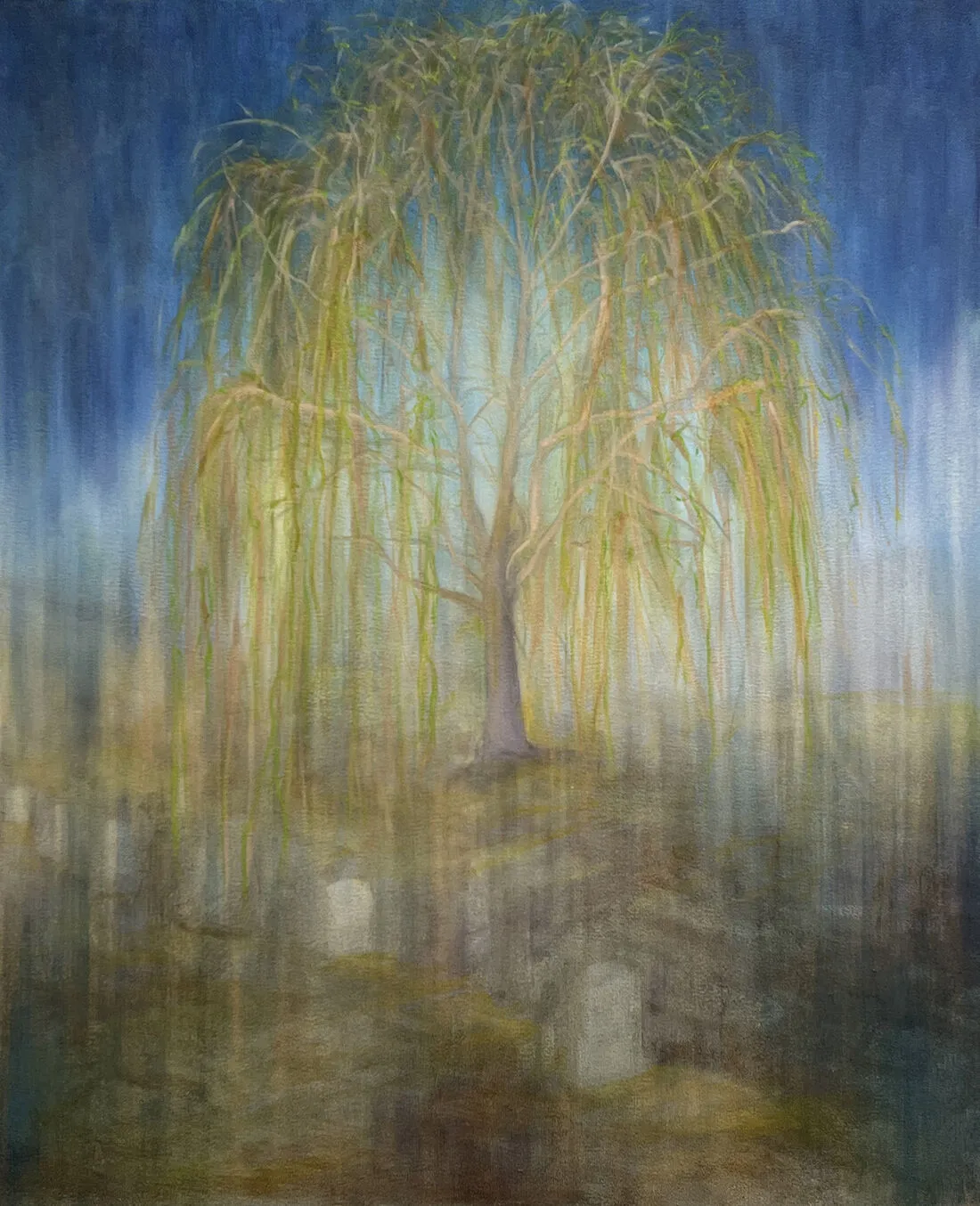
ARTIST STATEMENT
My work deals with blurring the edges of abstraction and representation. I explore the ways and means to both frame and represent the world that I observe around me. Color and light are primary forces in my paintings; they are oriented towards the natural world yet portray emotional spaces. This group of paintings portray willow trees near my home in South Minneapolis, a landscape and community that has been greatly impacted by the murder of George Floyd.
Willow trees hold rich symbolism for me: a new tree can grow from a mere cutting; the branches are flexible and can withstand high winds without snapping; the bark is analgesic, and the weeping willow has long been associated with grief and sadness but also resilience and rebirth. I find them beautiful and a source of solace to paint in this time of disruption and change.
ARTIST BIO
Carol Lee Chase has been teaching painting and drawing at St. Catherine University since 2007. Chase received her MFA with an emphasis in painting from California College of the Arts in Oakland, California in 1993 and her BA (studio art/French) from University of Wisconsin–River Falls. Her artwork is focused on painting and interdisciplinary projects. She exhibits her work locally and nationally, including exhibitions at Riverside Art Museum in Riverside, California; The Hillstrom Museum of Art at Gustavus Adolphus College in St. Peter, Minnesota; Form+Content Gallery in Minneapolis and the Minnesota Museum of American Art in St. Paul. Chase has received several awards and grants, including a Minnesota State Arts Board Artist Assistance Grant in 2003 and an artist’s residency at Atelier Höherweg in Düsseldorf, Germany in 2006. Between 2004-08 she served as the curator and program coordinator of Painting’s Edge, a contemporary painter’s workshop in Idyllwild, California. Her work can be found in numerous collections including the Mayo Clinic, IBM and the Federal Reserve Bank of Minneapolis. She has been represented by Groveland Gallery in Minneapolis since 1985.

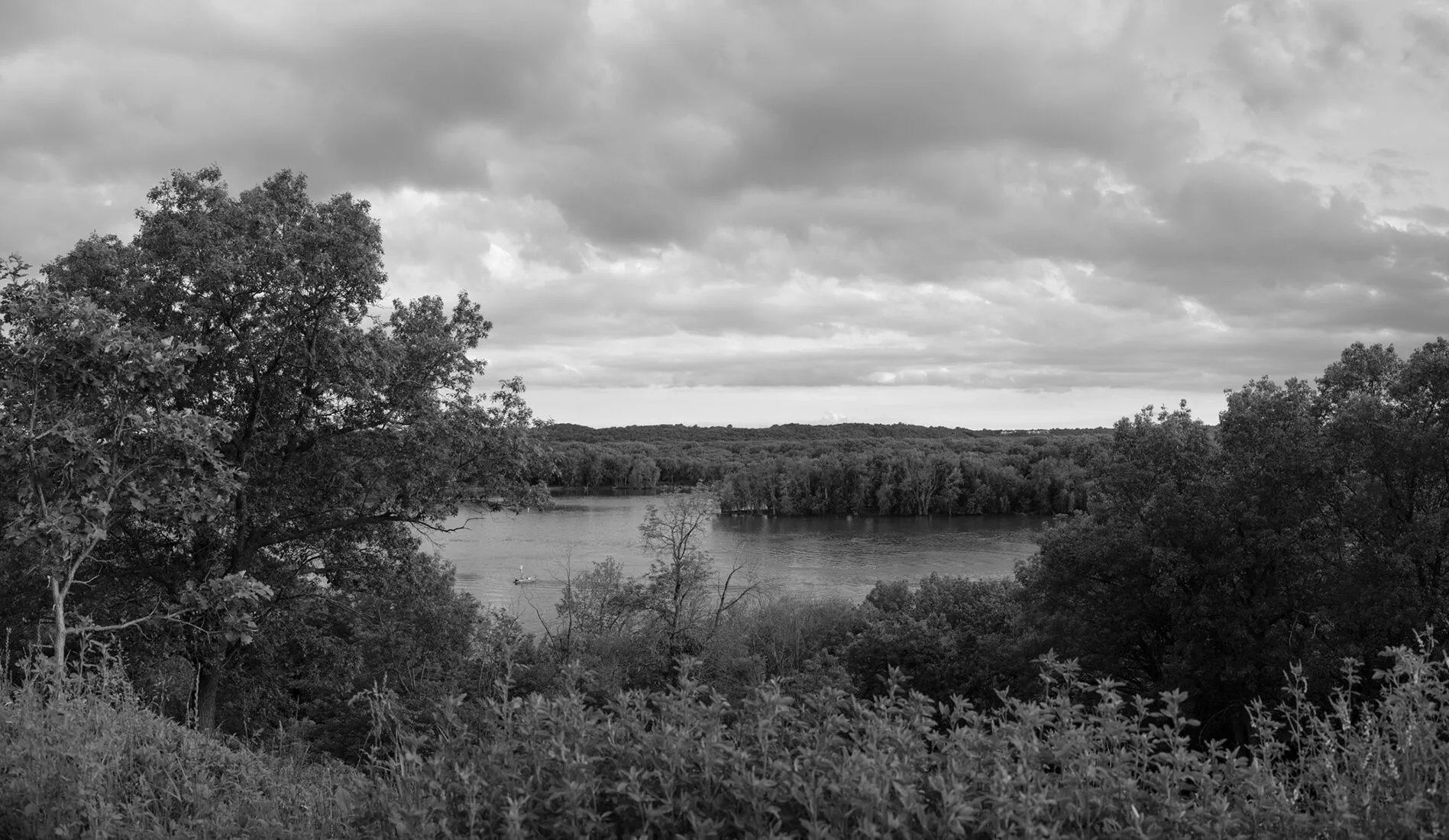
ARTIST STATEMENT
Between Rivers is a series of photographs about finding my footing at the confluence of the Mississippi and St. Croix. It is about place and it is about belonging. We moved here in 2007 and I still feel like an outsider. Small towns can be like that. Every place has its royalty. But belonging isn’t always determined by geography in the same way that meaning in a photograph isn’t determined solely by the thing in front of the camera. Clinical depression and generalized anxiety have been telling me that I don’t belong for 40 years. Where I find myself has little to do with it. Depression and anxiety don’t need a reason. They are predators lurking in the weeds, looking for cracks, testing the fences for vulnerabilities and waiting for opportunity. And I don’t need to tell you that the world has been offering up a steady stream (a river) of cracks and vulnerabilities. You are living through it, too. So, the confluence, this place where two rivers come together, one muddy with silt and one clear and stained dark by tannins, has become for me the embodiment of the coexistence of hope and despair. Making photographs, as it turns out, is a close cousin to the practice of mindful meditation. As with meditation, being here, now, carefully observing and attending to what finds you is part of the game. This place is the site of sublime beauty and joy, but like most places, it also contains an undercurrent of tragedy and historical injustices. Both are contained in the story of this place. But these photographs aren’t meant to explain, nor are they meant to be seen without considering where they were made. They sit in the gap, between rivers, filtered through feelings of loss, isolation, and uncertainty attending to what the world brings with one eye out for reminders of hope.
ARTIST BIO
Todd Deutsch earned his MFA from Cranbrook Academy of Art in Bloomfield Hills, Michigan. His photographs have been exhibited nationally and internationally. His work has appeared in Real Simple (US), New Scientist (UK), Nido (Germany), Vision Magazine (China) and others, and is included in private and public collections including the Walker Art Center, the Museum of Contemporary Photography, and the Portland Art Museum. A monograph of his work titled Gamers was published in 2008 by FP Editions, Brescia, Italy. Selections also appeared in Gamescenes: Art in the Age of Videogames, Johan & Levi, Milan. He teaches in the Department of Art and Art History at St. Catherine University, St. Paul.
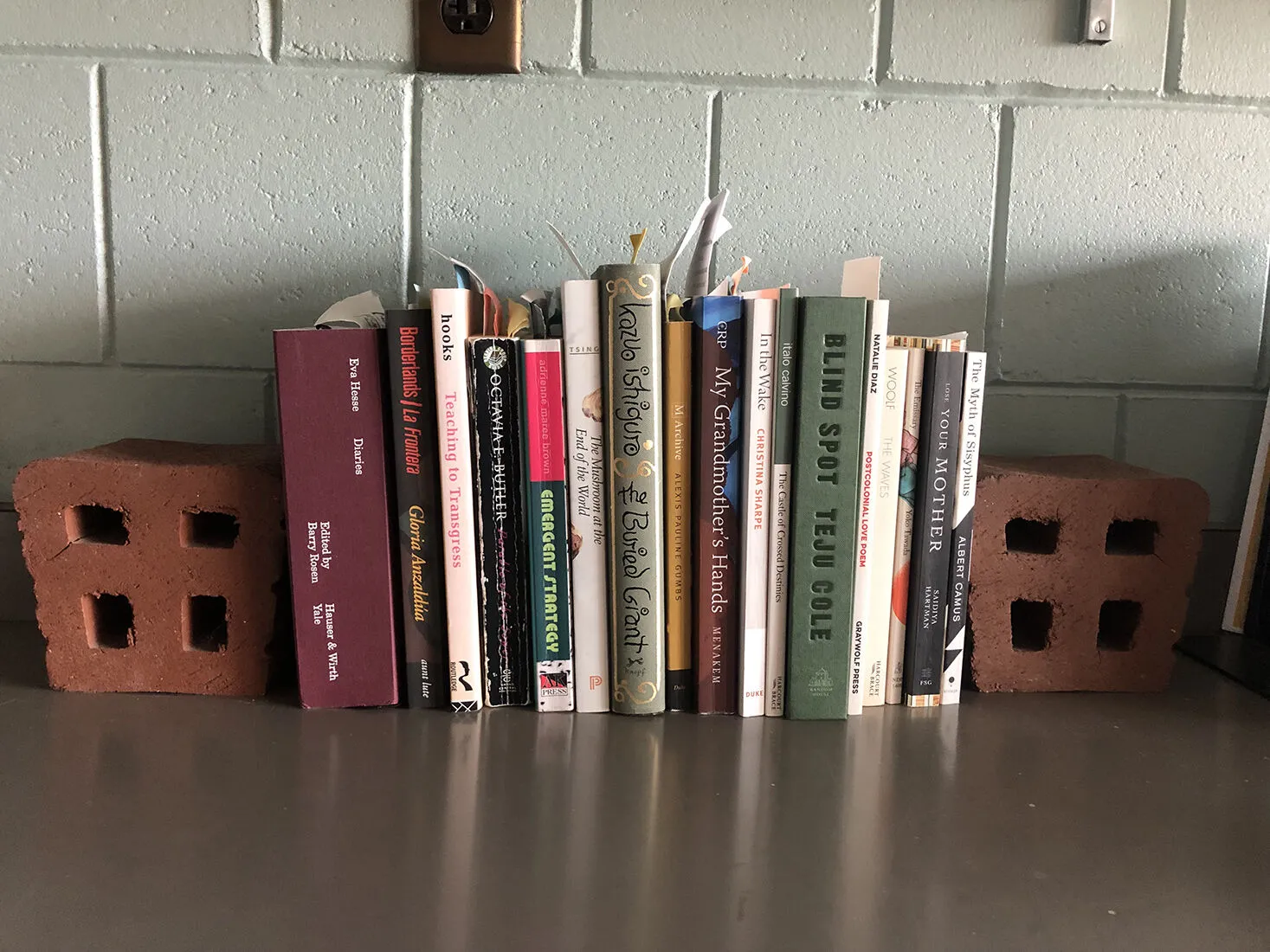
ARTIST STATEMENT
Before the pandemic, I was very much focused on the future of art history, and the future of higher education more broadly. Though I tried to root this work in questions about the past (e.g. how did we get here?) and actions in the present (e.g. advocacy and engaged pedagogies), the future was always an urgent abstraction upon which I projected all sorts of assumptions about how the world is and ought to be. Recognizing the many privileges afforded by my social location, I experienced a transformation in collective social isolation. Quarantine checked my arrogance and taught me to slow the fuck down.
What I’ve learned in the past few years is that shaping a creative life starts with what I choose to pay attention to. This is neither easy nor straightforward as it sounds. On social media and in my daily exchanges in real life, I am immersed in—and often overwhelmed by—the sheer volume of information and knowledge that I encounter in the form of words, images, and sounds. As a shy introvert with a Cancer moon, I crave deeper layers of time and space for contemplation. I wish to process and be changed by these encounters and experiences, so that I might show up in a better way and cause less harm. adrienne maree brown observes: “What you pay attention to grows.” Practicing this wisdom requires both patience and discernment to separate wheat from chaff.
One way this practice emerged in lockdown was in the books that I found myself turning to over and over again. Some of these texts I pulled off my bookshelves, whereas others found me in quarantine. All of them became portals to histories in need of knowing and to worlds already alive. It wasn’t long before I realized that the authors—artists, writers, educators, poets, and activists—were my guides in those precious months of solitude and loneliness. They showed me how to slow down and pay attention. They showed me how to live.
ARTIST BIO
Amy K. Hamlin (she/they) is a white educator and recovering art historian from St. Paul, MN (Dakota land) whose practice and research center on experiences of loss, memory, intimacy, and discernment.
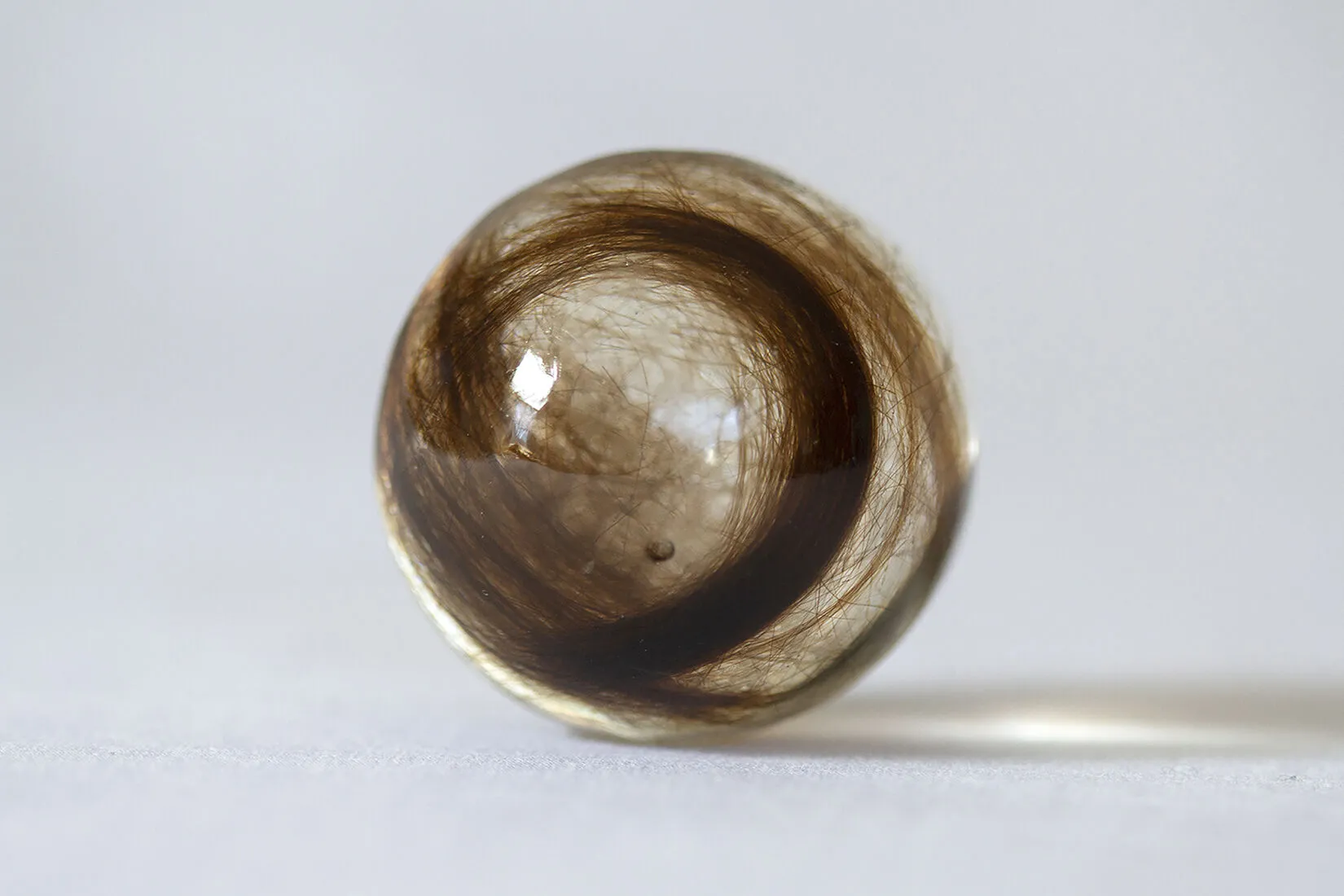
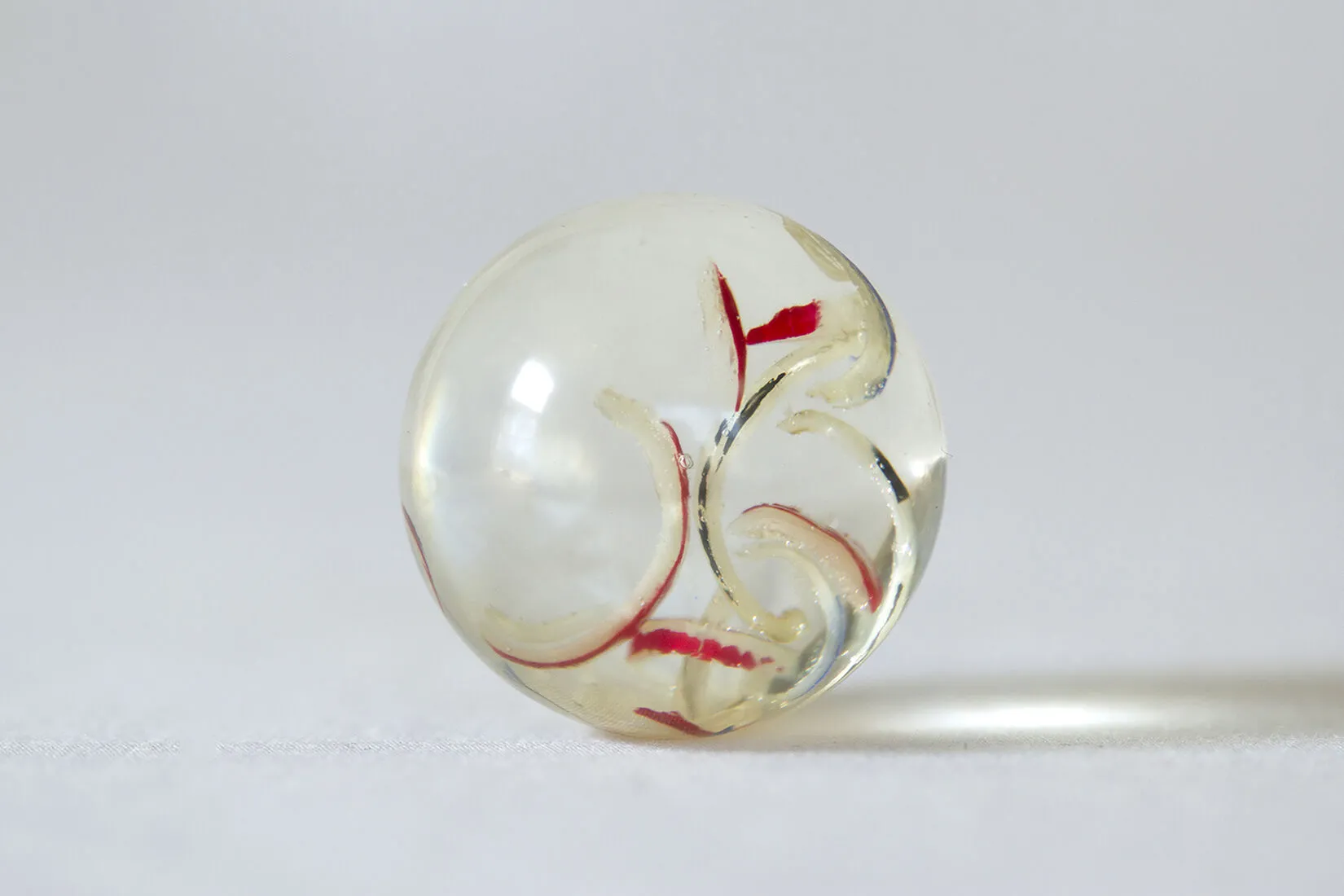
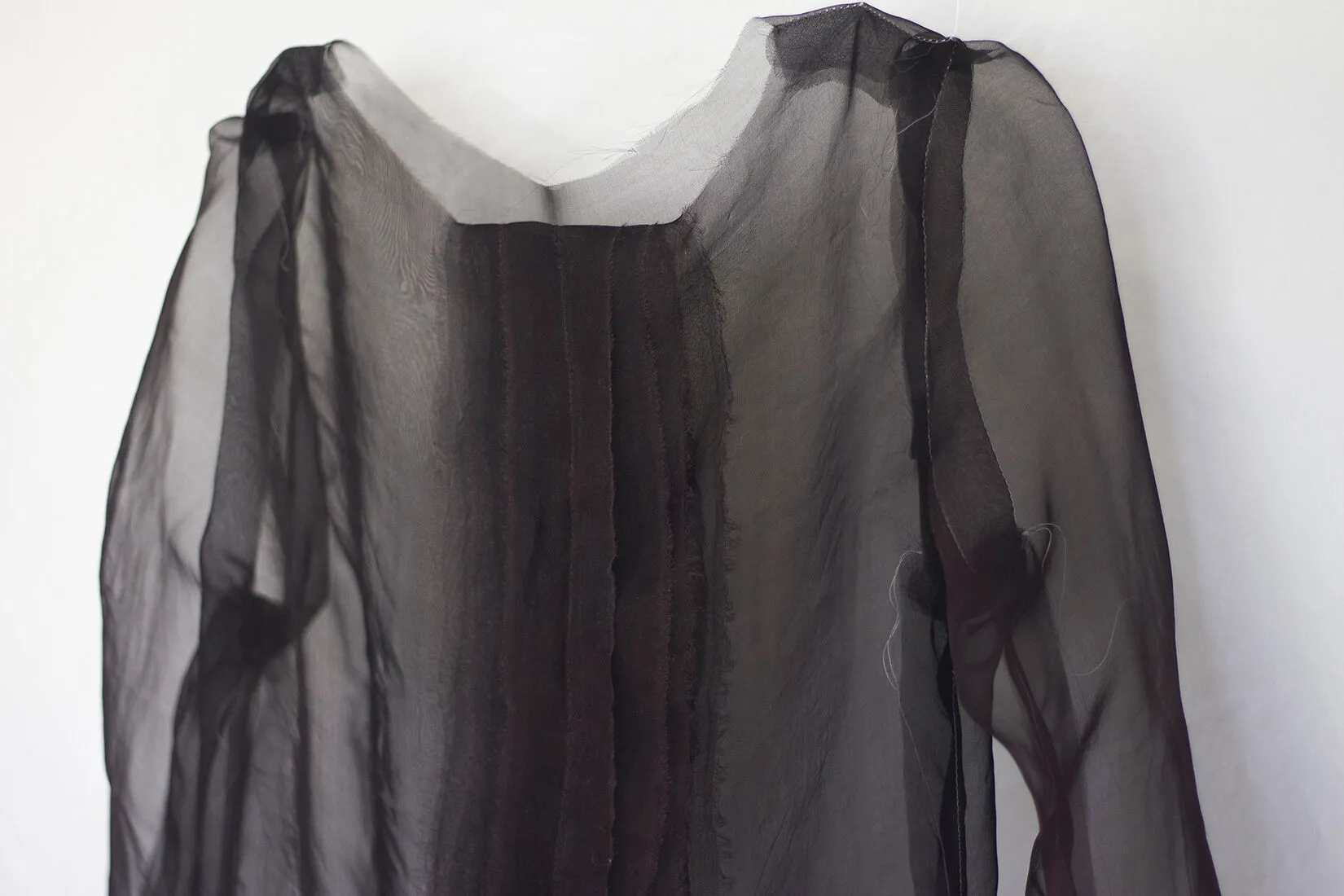
ARTIST STATEMENT
As a designer, my work focuses on the role design plays within our society. Design has the power to move individuals emotionally and cause reflective thinking while serving as a cultural artifact. My practice is driven by research and process. I approach design as a tool, using differing media — print media, fibers, photography, and digital fabrication techniques — to communicate the concept. Much of my work draws on experiences of loss and temporality. Using multi-media processes, I am able to explore the depths of these topics. Ideas of identity and mortality are explored, often bringing vulnerable topics to a public
space of viewing.
This body of work highlights the individual as a commodity; focusing solely on productivity becomes a means of personal loss. Physical signifiers of my identity; hair, nails, and blood, are served for public consumption. Repeated text acts as a daily reminder turned ritual, meditation, and affirmation. The idea of self as a commodifiable good critiques labor as the linchpin for Capitalism.
ARTIST BIO
Bethany C. Rahn is an artist, designer, and educator from Madison, Wisconsin. Her interdisciplinary studio practice integrates letterpress, printmaking, fibers, photography, digital fabrication, and sculptural techniques to explore concepts of identity through cycles of time.
Rahn received her MFA from Indiana University. She teaches in St. Paul, MN as an Assistant Professor in the Art and Art History Department at St. Catherine University. Her work has been shown in various group and solo exhibitions across the United States.
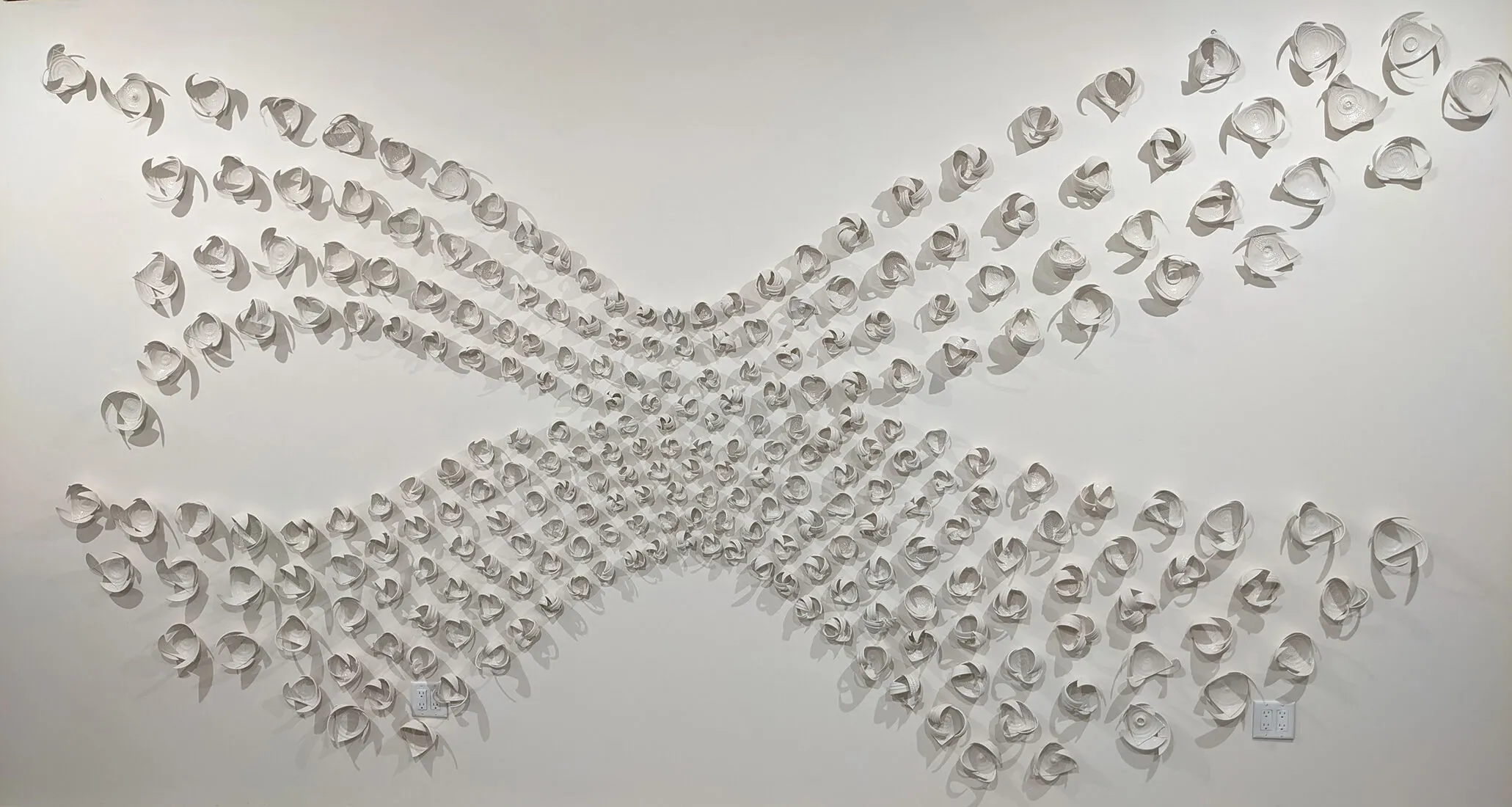
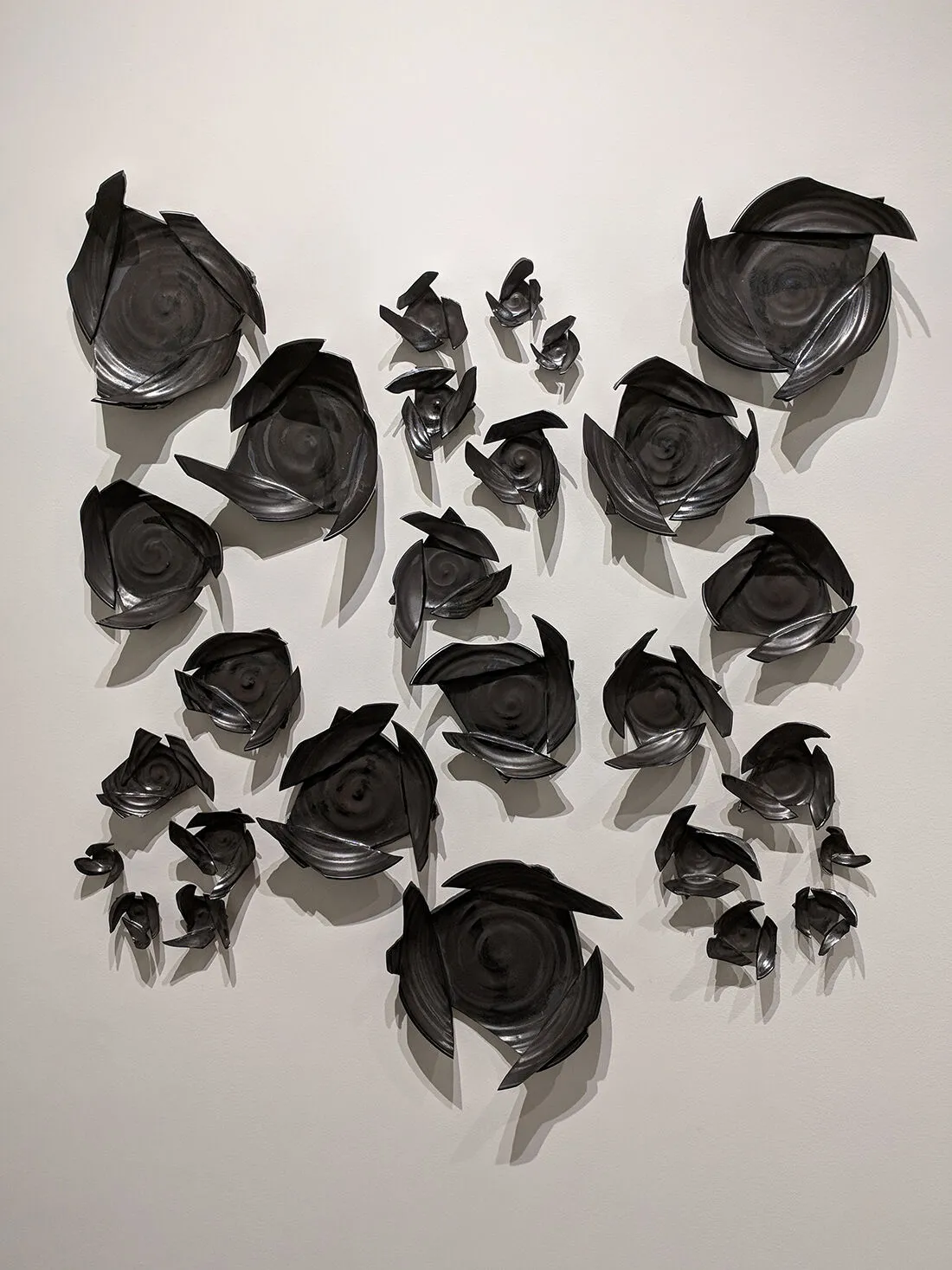
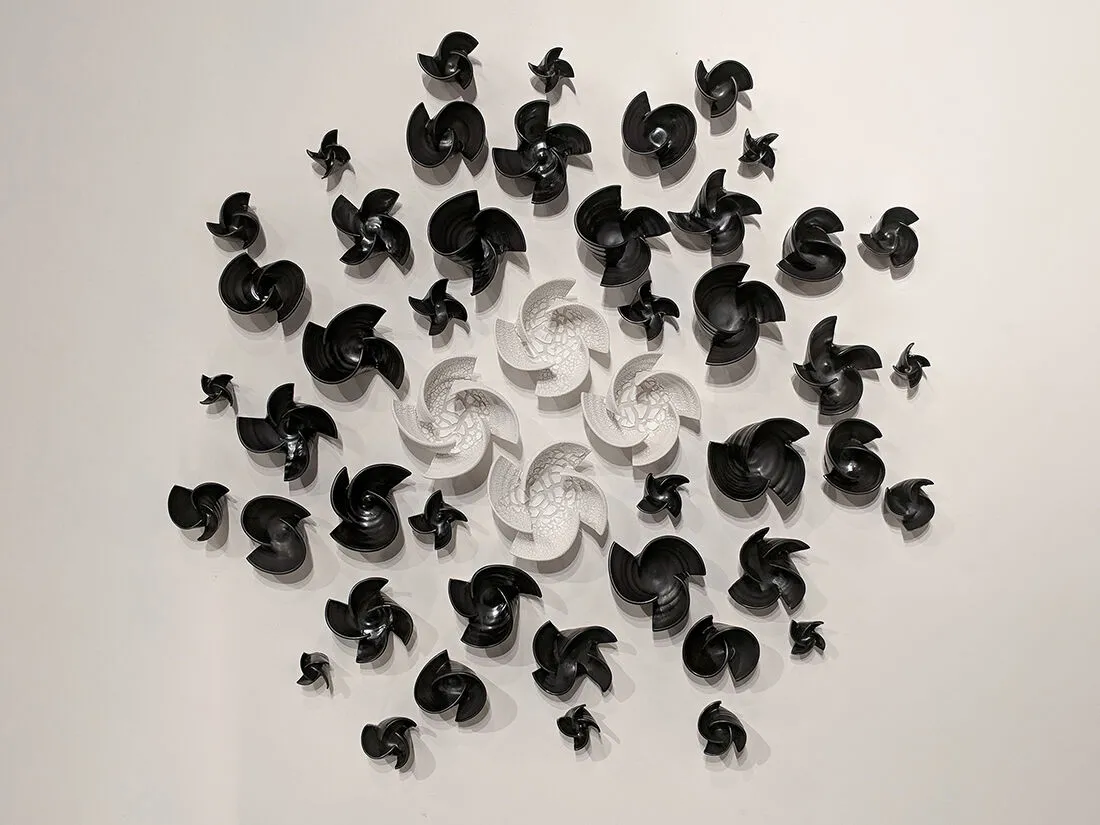
ARTIST STATEMENT
The last few years have given me cause to reflect on how my life and work fit into our world. I believe it is important to take the time to slow down, look closely at the world around us and listen deeply to one another's stories to understand ourselves and each other. I know my growth as a person and an artist depends on this understanding of multiple perspectives.
My life experiences and relationships have created a personal lens defined by “the space between,” where I am both/and rather than either/or. I am both the daughter of a Filipina and a woman with light skin. My mother would say that my outside was Swedish but my insides were definitely Filipina. These identities are held within me and unseen by most. I am used to living in that space between, where I am both seen and invisible. Ever since my dad gave me a chunk of clay to play with when I was 3 or 4, I have been able to turn to clay to help me make sense of my surroundings and myself. Clay gave me a voice when I was too shy or scared to speak up. When I was 12, I discovered the wheel and I loved the feel of the soft clay moving through my fingers, and how it responded to my touch, however slight. I was seen by clay and I could use it to be seen.
I am the daughter of a painter and an architect. Growing up, I was surrounded by art and objects made by people I knew: a clay bust of my Swedish grandfather, lace and macrame from my grandparents in the Philippines, my dad's colorful paintings and my mom’s highly textured weavings and architectural drawings. Rooms were divided into smaller spaces by my mom's textiles, and her tile samples were my playthings. I remember being fascinated by the sound and feel of two, tiny, matte-glazed, porcelain tile pieces as I rubbed them together between my fingers. Early experiences like these—exploring space and material tactility—intrigued and comforted me.
In addition to my artist parents, I have been very lucky to have had multiple mentors in my life. Gail Kristensen, an artist whose work and life informed me about the versatility of clay, taught me that a clay artist can make both everyday, functional objects and large sculptural installations, with no limitations. Ron Gallas introduced me to the concept that function itself could become the content for a piece and that the process of working on the wheel could be captured by embracing multiples and variations. Jun Kaneko modeled a strong work ethic grounded in experimentation and vision, while Judy Onofrio’s exuberance for life inspires me. These artistic relationships helped me both define the way I approach working with clay as well as understand the importance of community and shared experience within a studio environment. As a teacher and mentor, I try to create similar spaces for my students. This approach to instruction proved to be a great asset as we navigated both online and in-person learning during COVID. It was clear that my students craved community and connection.
Functional forms—cups, plates, bowls, plates—have a long history of connecting people through eating, drinking and socializing. I have always made both functional and sculptural work, and my sculptural work derives from functional forms. In fact, most of my work has been about “the space between” functional and sculptural forms. Thrown vessels are cut into parts to be re-imagined, creating new spaces and forms to be discovered. Recognizable functional forms create large scale abstract installations where the literal space between forms on the wall has as much importance as the forms themselves and both clay and shadow have equal weight in how we read the piece.
A trip to Spain and a visit to the Alhambra in 2011 sparked the beginning of my current body of work. The power that I felt in those spaces made me realize that scale and pattern made it possible to communicate and connect to others on a different level. I want to use the language of functional forms to highlight our shared experiences and create an opportunity for engaging with different perspectives that might help us all navigate the changing world.
The pieces you see in this exhibition reflect my life experiences and my desire to share my perspective with others. I invite you to look closely and perhaps discover something new or unexpected.
ARTIST BIO
Monica is a clay artist who works primarily with porcelain. She is well-known for her playful, wheel-thrown functional wares as well as her large-scale, abstract wall installations. She started working with clay as a young child, and is the daughter of artists: her mother was an architect and her father a painter. Rudquist attended Macalester College in St. Paul where she worked with notable ceramicists Gail Kristensen and Ron Gallas. She continued her studies at Cranbrook Academy of Art where she earned her MFA while working with
Jun Kaneko.
After her graduate studies and upon her return to the Twin Cities, Monica joined The Women’s Artist Registry of Minnesota (W.A.R.M.) where she exhibited her first large-scale wall installation. Since then, she has exhibited widely across the country in group and solo exhibitions as well as at regional art fairs. Her work has been featured in several publications including Ceramics Monthly, Ceramics Art and Perception and the Room and Board catalog. Her work is included in numerous private and public collections, including the McKnight Foundation, the Minnesota History Center and Life Source of Minnesota, which has the largest permanent installation of Rudquist’s work on display at their headquarters
in Minneapolis.
Rudquist is active in the local art scene as co-president of Minnesota Women Ceramic Artists (MNWCA), and a founding member of Northern Clay Center. She has taught at various institutions in the Midwest and is currently Assistant Professor of Ceramics and Sculpture at St. Catherine University.
Image Gallery
Click an image to view in larger size
